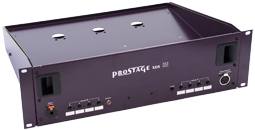What is a Looper? What is True Bypass? What is a Switcher? How do I use these units to control my effects and switch my amp?
What is a (Effectpedal-) Looper?
A looper is used to include effects devices into the signal path – respectively, exclude them completely from the signal path when the effect is not used. A looper for audio signals has a signal Input, one or more pairs of Send/Return jacks (these are the loops) and a signal Output. The guitar is connected to the input, the effects to the send / returns and the output goes to the amplifier.
The audio loops are connected in series inside the looper, this means that each loop is connected to the next. When a loop is turned off, the Send and Return jacks for this loop are bypassed. The audio signal passes directly to the next loop, respectively, to the Output. If the loop is switched on, the guitar signal is routed to the Send jack. The Return jack is connected with the next loop, respectively with the Output. Thus, the connected effect unit is inserted in the signal path.
If no loop is switched on at all, the signal from the Input goes directly to the Output of the looper. The effects are only in the signal path when the corresponding loop is turned on. The loops can also be used to distribute the signal to different amplifiers (switchable) or to mute the signal for tuning.
Usually, a Looper can be controlled by MIDI. This means that you can store an individual setting of the enabled and disabled effects for each preset number on the foot controller.
What is a True Bypass Looper?
Bypass means that the signal is passed from the Input jack of an (effect-) device directly to its Output. The effect is thus bypassed. With a “True bypass”, this is done with a switch or a relay (a remotely controllable switch). That is as whether the jacks are soldered directly to each other. The Guitar signal does not pass through any electronic component and therefore is not affected in any way.
There are also devices that control the bypass electronically. In this case, at least a few electronic component (a buffer amplifier) will always remain in the signal path, even if the unit is switched of. In the worst case, even the entire analog-to-digital and digital-to-analog converter chain remains in the signal path. Bypass is then made on the digital side of the effects unit. Thus, the guitar signal will be affected even if the effect is turned off. Therefore, if you are using a looper and like to have a clean guitar sound, make sure to use a “True Bypass Looper”.
What is a MIDI Switcher?
A MIDI switcher, basically, replaces the conventional amp channel foot switch. Instead of using the original foot switch, you can connect the switching Inputs of your amp to a MIDI switcher. The amp is then switched by the MIDI switcher which is controlled by a MIDI foot controller. For each preset number, you can store individual setting of the amp channel selection, boost on/off state and whatever you can switch on your amp.







